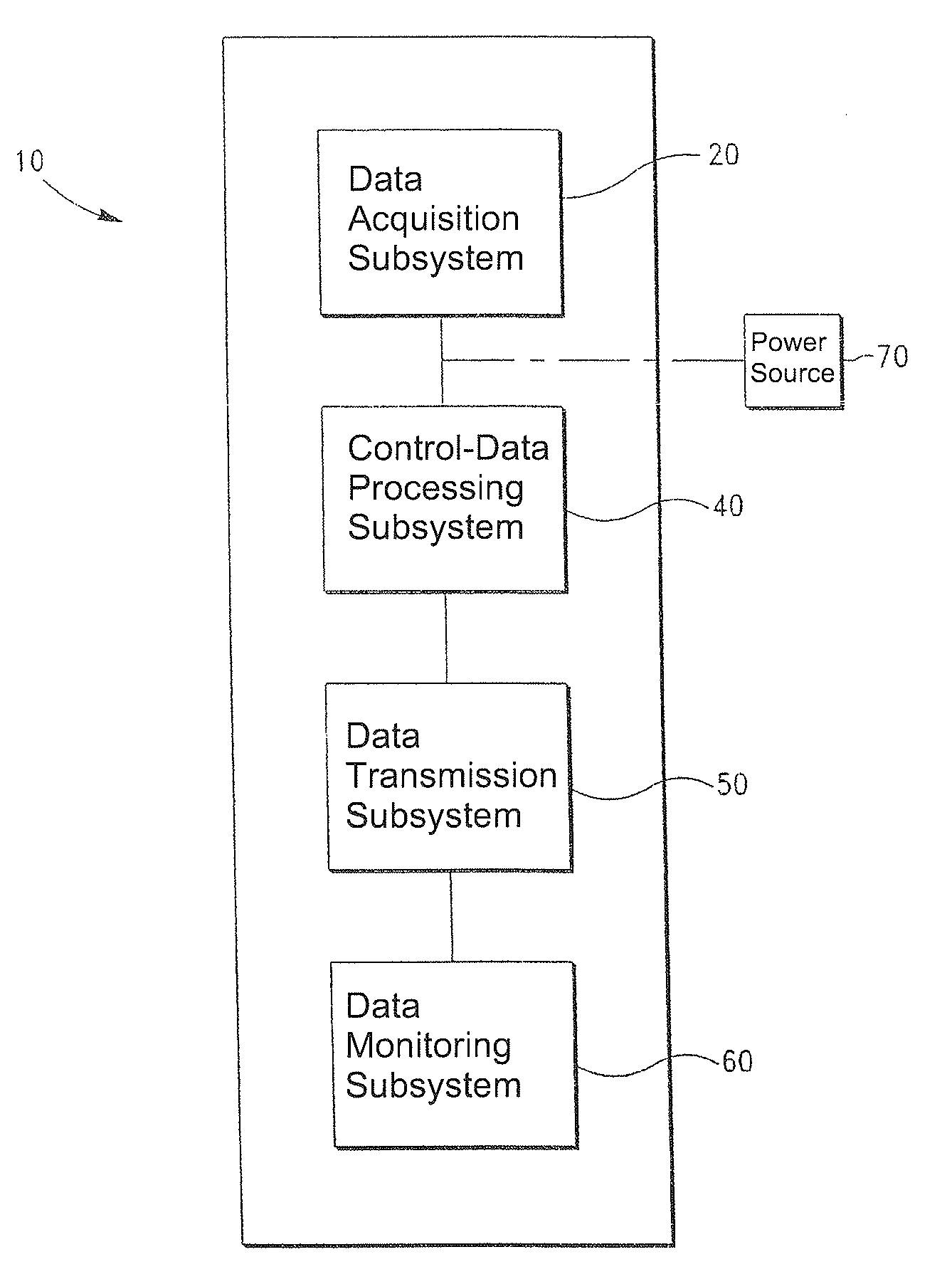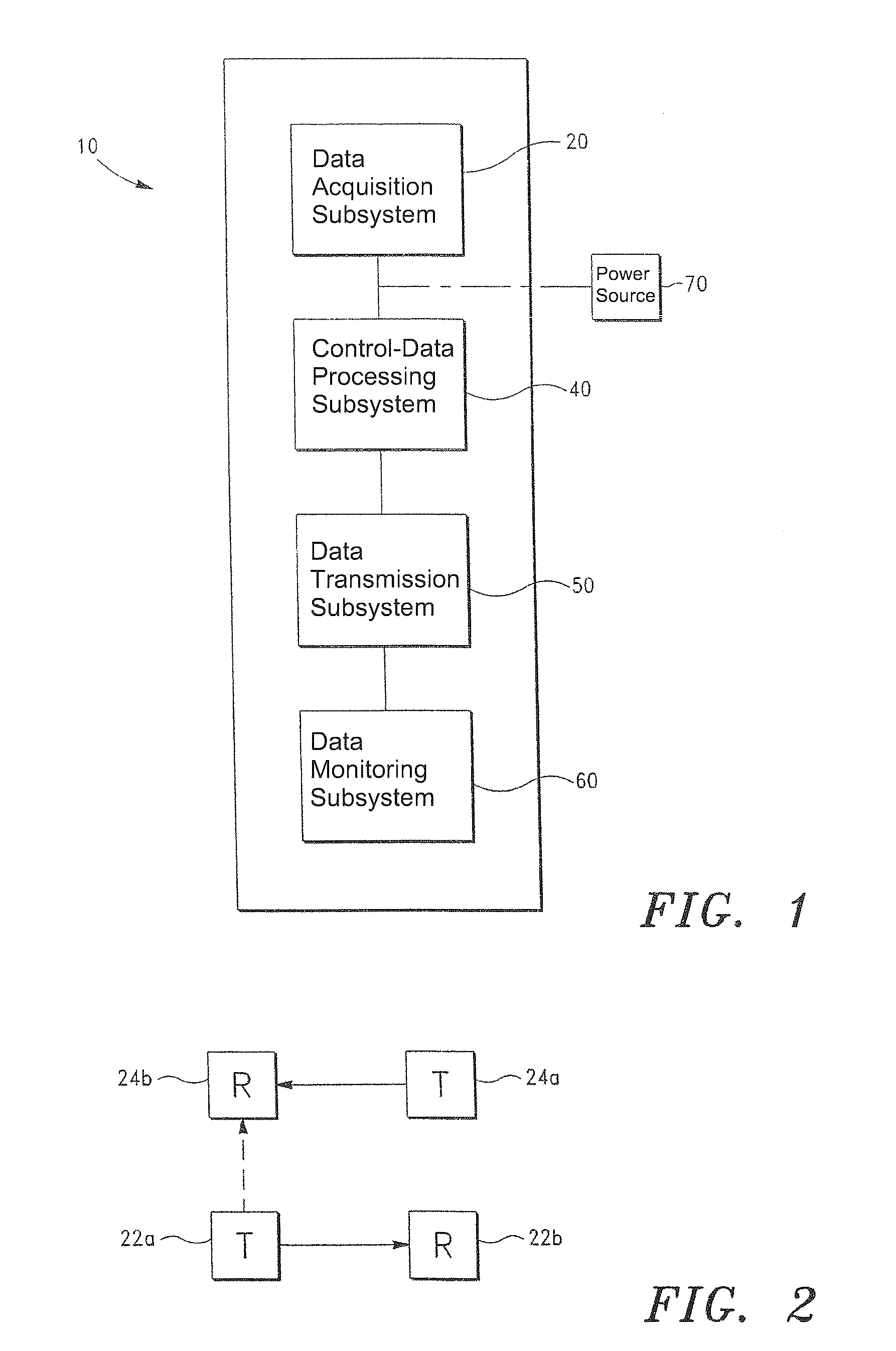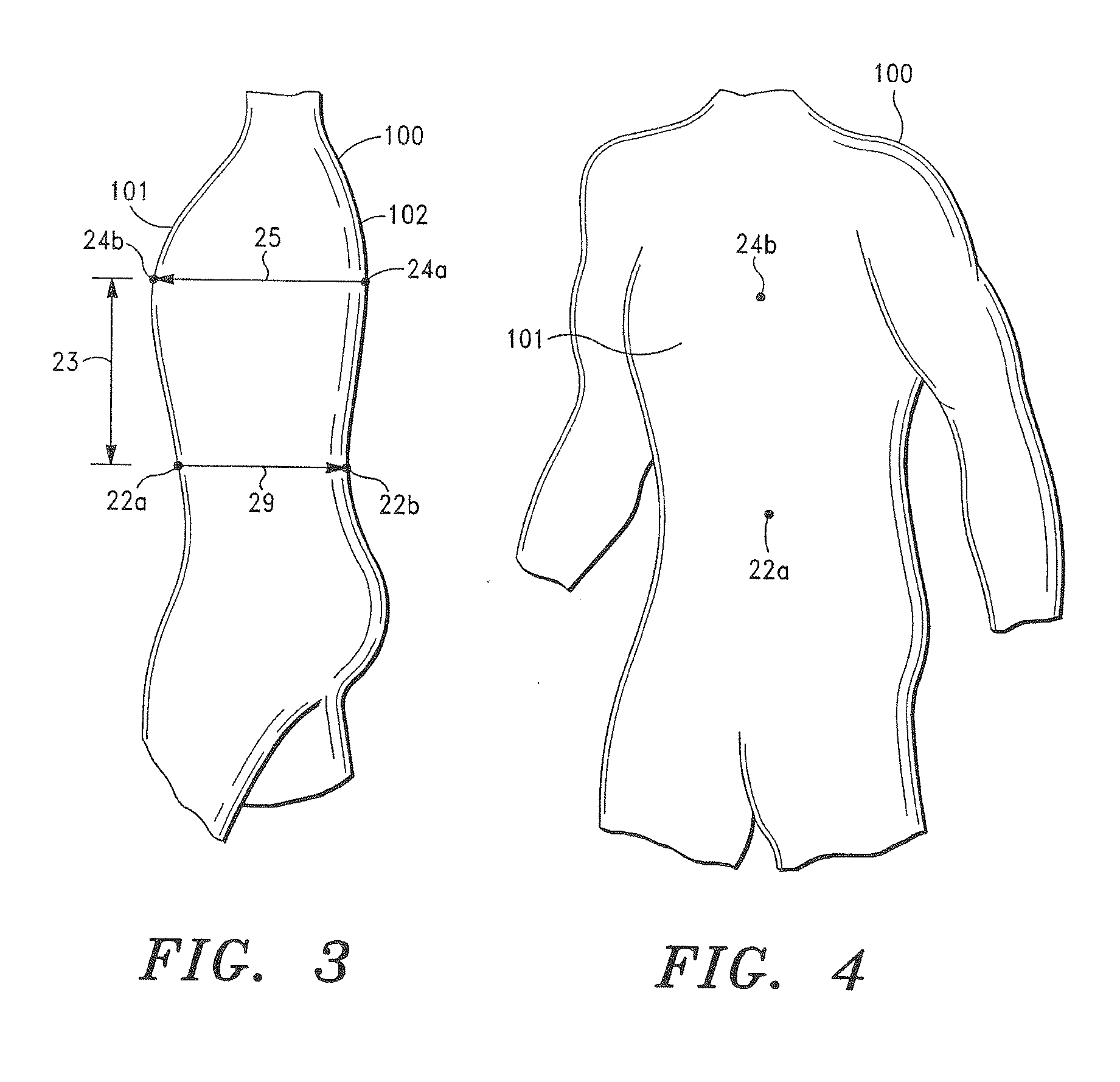Method And System For Limiting Interference In Magnetometer Fields
a magnetometer field and interference limitation technology, applied in the field of magnetometer-based systems, can solve the problems of respiratory characteristics derived from the determined anatomical displacement, inaccurate measurement of the magnetometer field, and inability to monitor so as to achieve the effect of limiting interference in the magnetometer field and improving the monitoring of the respiratory characteristics of subjects
- Summary
- Abstract
- Description
- Claims
- Application Information
AI Technical Summary
Benefits of technology
Problems solved by technology
Method used
Image
Examples
example 1
[0088]A physiology monitoring system, such as that illustrated in FIG. 1, is provided.
[0089]Paired magnetometers 22a, 22b, and 24a, 24b are positioned on a subject, as shown in FIGS. 3-5 above.
[0090]The magnetic field between one of the magnetometer pairs (e.g., magnetometers 22a, 22b) has a steady state frequency of approximately 9000 Hz. The magnetic field between the other pair of magnetometers (e.g., magnetometers 24a, 24b) has a steady state frequency of approximately 8760 Hz.
[0091]Disposed close to the monitored subject is a fluorescent light generating a signal having frequencies in the range of 8800 to 9000 Hz. Interference resulting from the fluorescent light signal is detected in the magnetic field between magnetometers 22a and 22b and, hence, in signals representing measured changes in the magnetic field.
[0092]The frequency of the magnetic fields between the paired magnetometers 22a-22b and 24a-24b is then randomly varied between 8900 and 9100 Hz and 8660 and 8860 Hz, res...
example 2
[0093]In example 2, the same physiological monitoring system is employed and the same conditions are present. However, in example 2, the frequency period of the magnetic fields between the paired magnetometers 22a-22b and 24a-24b is pseudo-randomly varied between 1 / 8900 and 1 / 9100 seconds and 1 / 8660 and 1 / 8860 seconds, respectively. Interference by the fluorescent light signal is similarly minimized.
[0094]The methods and systems of the invention, described above, thus provide numerous significant advantages over conventional methods and systems for limiting magnetometer interference. Among the advantages are (i) enhanced reduction of electromagnetic interference in measured magnetic fields, (ii) enhanced accuracy of measured changes in magnetic fields, and, hence, signals representing same, and (iii) detection of very small magnetic fields and changes thereto in high noise environments.
[0095]A further significant advantage is the accurate determination of anatomical and physiologica...
PUM
 Login to View More
Login to View More Abstract
Description
Claims
Application Information
 Login to View More
Login to View More - R&D
- Intellectual Property
- Life Sciences
- Materials
- Tech Scout
- Unparalleled Data Quality
- Higher Quality Content
- 60% Fewer Hallucinations
Browse by: Latest US Patents, China's latest patents, Technical Efficacy Thesaurus, Application Domain, Technology Topic, Popular Technical Reports.
© 2025 PatSnap. All rights reserved.Legal|Privacy policy|Modern Slavery Act Transparency Statement|Sitemap|About US| Contact US: help@patsnap.com



